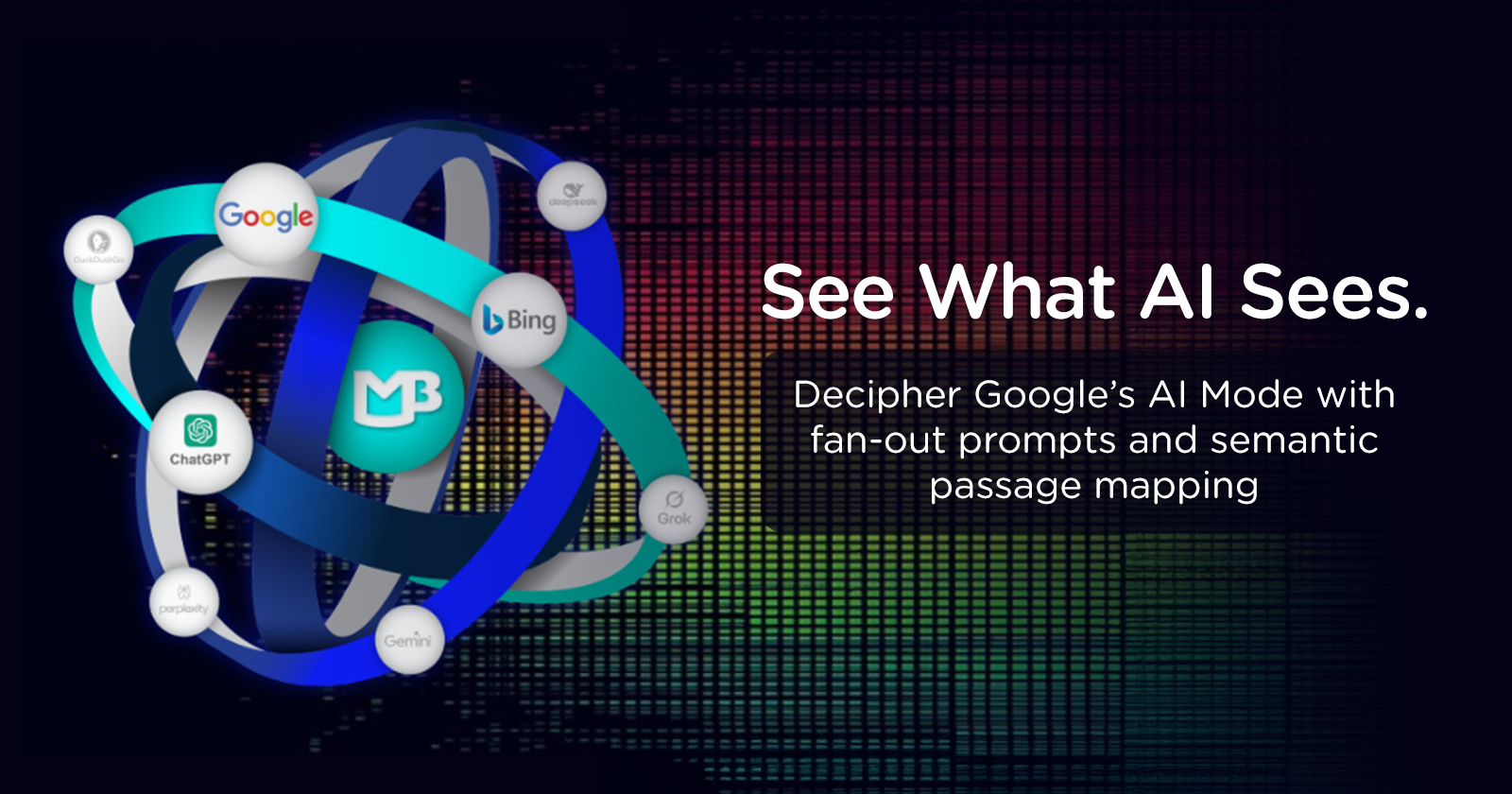This post was sponsored by MarketBrew. The opinions expressed in this article are the sponsor’s own.
Is Google using AI to censor thousands of independent websites?
Wondering why your traffic has suddenly dropped, even though you’re doing SEO properly?
Between letters to the FTC describing a systematic dismantling of the open web by Google to SEO professionals who may be unaware that their strategies no longer make an impact, these changes represent a definite re-architecting of the web’s entire incentive structure.
It’s time to adapt.
While some were warning about AI passage retrieval and vector scoring, the industry largely stuck to legacy thinking. SEOs continued to focus on E-E-A-T, backlinks, and content refresh cycles, assuming that if they simply improved quality, recovery would come.
But the rules had changed.
Google’s Silent Pivot: From Keywords to Embedding Vectors
In late 2023 and early 2024, Google began rolling out what it now refers to as AI Mode.
What Is Google’s AI Mode?
AI Mode breaks content into passages, embeds those passages into a multi-dimensional vector space, and compares them directly to queries using cosine similarity.
In this new model, relevance is determined geometrically rather than lexically. Instead of ranking entire pages, Google evaluates individual passages. The most relevant passages are then surfaced in a ChatGPT-like interface, often without any need for users to click through to the source.
Beneath this visible change is a deeper shift: content scoring has become embedding-first.
What Are Embedding Vectors?
Keywords focus on exact matches. Embedding vectors focus on meaning.
Traditional SEO relied on placing target terms throughout a page. But Google’s AI Mode now compares the semantic meaning of a query and a passage using embedding vectors. A passage can rank well even if it doesn’t use the same words, as long as its meaning aligns closely with the query.
This shift has made many SEO strategies outdated. Pages may be well-written and keyword-rich, yet still underperform if their embedded meaning doesn’t match search intent.
What SEO Got Wrong & What Comes Next
The story isn’t just about Google changing the game, it’s also about how the SEO industry failed to notice the rules had already shifted.
Don’t: Misread the Signals
As rankings dropped, many teams assumed they’d been hit by a quality update or core algorithm tweak. They doubled down on familiar tactics: improving E-E-A-T signals, updating titles, and refreshing content. They pruned thin pages, boosted internal links, and ran audits.
But these efforts were based on outdated models. They treated the symptom, visibility loss, not the cause: semantic drift.
Semantic drift happens when your content’s vector no longer aligns with the evolving vector of search intent. It’s invisible to traditional SEO tools because it occurs in latent space, not your HTML.
No amount of backlinks or content tweaks can fix that.
This wasn’t just platform abuse. It was also a strategic oversight.
SEO teams:
- Misread Google’s intentions.
- Over-relied on anecdotal fixes.
- Ignored early research on passage retrieval and embeddings.
Many believed that doing what Google said, improving helpfulness, pruning content, and writing for humans, would be enough.
That promise collapsed under AI scrutiny.
But we’re not powerless.
Don’t: Fall Into The Trap of Compliance
Google told the industry to “focus on helpful content,” and SEOs listened, through a lexical lens. They optimized for tone, readability, and FAQs.
But “helpfulness” was being determined mathematically by whether your vectors aligned with the AI’s interpretation of the query.
Thousands of reworked sites still dropped in visibility. Why? Because while polishing copy, they never asked: Does this content geometrically align with search intent?
Do: Optimize For Data, Not Keywords
The new SEO playbook begins with a simple truth: you are optimizing for math, not words.
The New SEO Playbook: How To Optimize For AI-Powered SERPs
Here’s what we now know:
- AI Mode is real and measurable.
✅You can calculate embedding similarity.
✅You can test passages against queries.
✅You can visualize how Google ranks. - Content must align semantically, not just topically.
✅Two pages about “best hiking trails” may be lexically similar, but if one focuses on family hikes and the other on extreme terrain, their vectors diverge. - Authority still matters, but only after similarity.
✅The AI Mode fan-out selects relevant passages first. Authority reranking comes later.
✅If you don’t pass the similarity threshold, your authority won’t matter. - Passage-level optimization is the new frontier.
✅Optimizing entire pages isn’t enough. Each chunk of content must pull semantic weight.
How Do I Track Google AI Mode Data To Improve SERP Visibility?
It depends on your goals; for success in SERPs, you need to focus on tools that not only show you visibility data, but also how to get there.
Profound was one of the first tools to measure whether content appeared inside large language models, essentially offering a visibility check for LLM inclusion. It gave SEOs early signals that AI systems were beginning to treat search results differently, sometimes surfacing pages that never ranked traditionally. Profound made it clear: LLMs were not relying on the same scoring systems that SEOs had spent decades trying to influence.
But Profound stopped short of offering explanations. It told you if your content was chosen, but not why. It didn’t simulate the algorithmic behavior of AI Mode or reveal what changes would lead to better inclusion.
That’s where simulation-based platforms came in.
Market Brew approached the challenge differently. Instead of auditing what was visible inside an AI system, they reconstructed the inner logic of those systems, building search engine models that mirrored Google’s evolution toward embeddings and vector-based scoring. These platforms didn’t just observe the effects of AI Mode, they recreated its mechanisms.
As early as 2023, Market Brew had already implemented:
- Passage segmentation that divides page content into consistent ~700-character blocks.
- Embedding generation using Sentence-BERT to capture the semantic fingerprint of each passage.
- Cosine similarity calculations to simulate how queries match specific blocks of content, not just the page as a whole.
- Thematic clustering algorithms, like Top Cluster Similarity, to determine which groupings of passages best aligned with a search intent.
🔍 Market Brew Tutorial: Mastering the Top Cluster Similarity Ranking Factor | First Principles SEO
This meant users could test a set of prompts against their content and watch the algorithm think, block by block, similarity score by score.
Where Profound offered visibility, Market Brew offered agency.
Instead of asking “Did I show up in an AI overview?”, simulation tools helped SEOs ask, “Why didn’t I?” and more importantly, “What can I change to improve my chances?”
By visualizing AI Mode behavior before Google ever acknowledged it publicly, these platforms gave early adopters a critical edge. The SEOs using them didn’t wait for traffic to drop before acting, they were already optimizing for vector alignment and semantic coverage long before most of the industry knew it mattered.
And in an era where rankings hinge on how well your embeddings match a user’s intent, that head start has made all the difference.
Visualize AI Mode Coverage. For Free.
SEO didn’t die. It transformed, from art into applied geometry.
To help SEOs adapt to this AI-driven landscape, Market Brew has just announced the AI Mode Visualizer, a free tool that simulates how Google’s AI Overviews evaluate your content:
- Enter a page URL.
- Input up to 10 search prompts or generate them automatically from a single master query using LLM-style prompt expansion.
- See a cosine similarity matrix showing how each content chunk (700 characters) for your page aligns with each intent.
- Click any score to view exactly which passage matched, and why.
This is the only tool that lets you watch AI Mode think.
Two Truths, One Future
Nate Hake is right: Google restructured the game. The data reflects an industry still catching up to the new playbook.
Because two things can be true:
- Google may be clearing space for its own services, ad products, and AI monopolies.
- And many SEOs are still chasing ghosts in a world governed by geometry.
It’s time to move beyond guesses.
If AI Mode is the new architecture of search, we need tools that expose how it works, not just theories about what changed.
We were bringing you this story back in early 2024, before AI Overviews had a name, explaining how embeddings and vector scoring would reshape SEO.
Tools like the AI Mode Visualizer offer a rare chance to see behind the curtain.
Use it. Test your assumptions. Map the space between your content and modern relevance.
Search didn’t end.
But the way forward demands new eyes.
________________________________________________________________________________________________
Image Credits
Featured Image: Image by MarketBrew. Used with permission.


